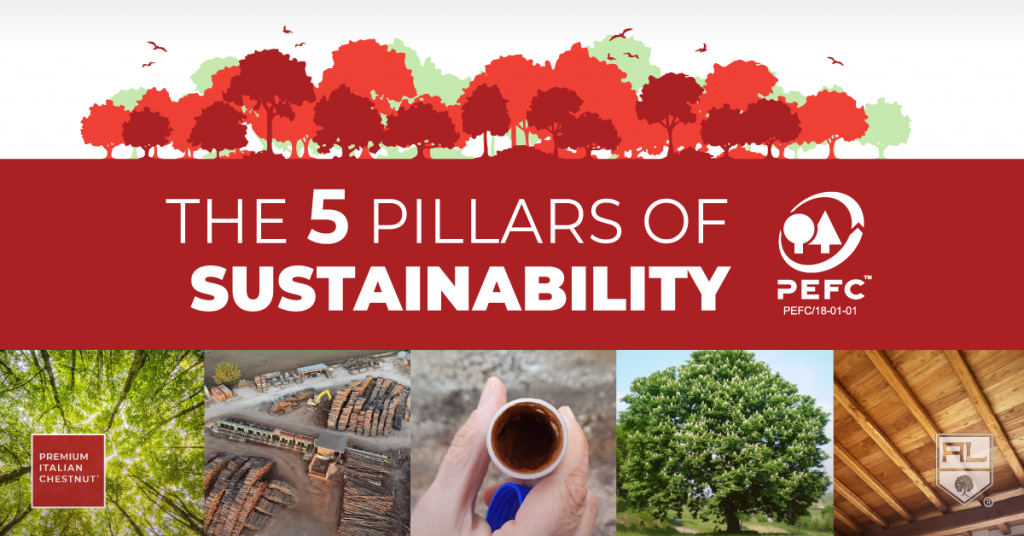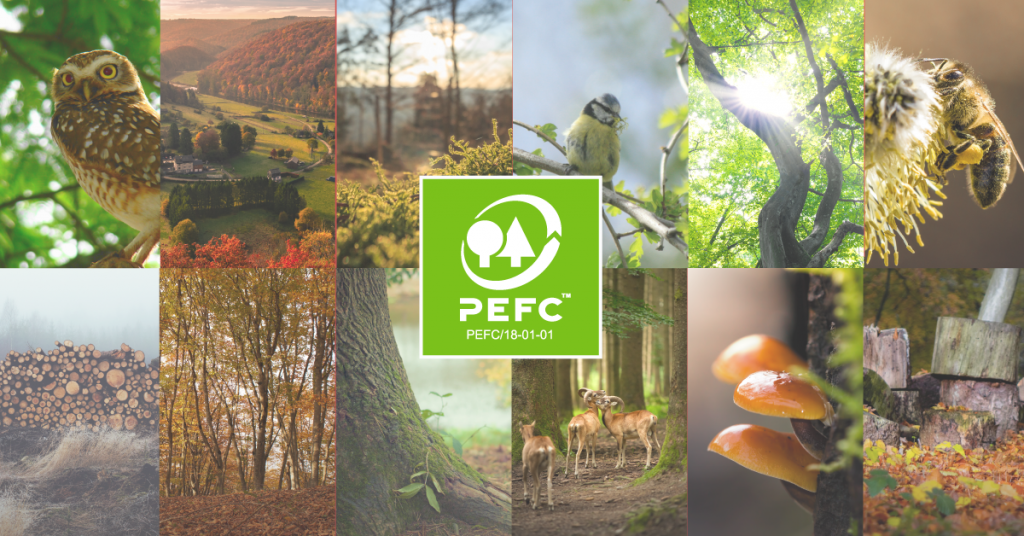
PEFC, A SEAL OF GUARANTEE
How many times have we heard about sustainability? Countless, in a wide variety of areas.
But specifically, what is the concept of sustainability? What is its essence? Its internal structure and functions?
To get to the heart of the matter, we need to introduce you to the microcosm of PEFC, which stands for Programme for Endorsement of Forest Certification schemes.
PEFC is a worldwide non-governmental organization founded in 1999 which, through the support of forest owners, public administrations, environmental/wood marketing organizations, trade associations and workers’ unions, deals with the sustainable management of forests, safeguarding and protecting the environmental heritage for future generations.
It is a vitally important body for the wood industry which, through its activities, allows companies and their customers to benefit from controlled products, of safe origin and certified in a correct and regular manner.
All this is part of a general framework of sustainability categorized into several sectors, governed by five pillars designed equally and without a hierarchical framework, the absence of which implies the necessary coexistence of the same.
Environmental Pillar: Respect for the Planet
PEFC can be considered one of the cornerstones of sustainability, the principle on which the famous environmental pillar is based. The protection of the territory, in this case of chestnut forests – a type of forest that is dear to us because of the countless properties it contains – is the primary objective to which a community (characterized by the cooperation between companies and common people) must aspire, so that the ecosystems of our planet do not undergo lethal changes.
In this regard, let’s focus our attention on the European Chestnut: remember what makes the “Tannin” so special? Now try to think for a moment of the consequences, for man and not only, that would arise from any sudden imbalance.
Historical-Cultural Pillar: a Heritage to Protect
The most common mistake made when discussing sustainability is to favor the environmental aspect over the other peculiarities that characterize the aforementioned development model: the second pillar that supports the structure in question is distinguished by its historical and cultural profile.
With it, it is more than a duty to convey, with constancy and dedication, a message devoted to the valorization of quality products, ensuring at the same time the protection of valuable environmental resources, sometimes connected to an alternative sphere such as literature, steeped in history, legends and cultural recognition. Among the innumerable possible examples, the plurimillennial Hundred Horsed Chestnut serves as emblematic testimony.
Economic Pillar: The Invaluable Value of Raw Material
The third pillar of sustainability can be traced back to economic value, not to be confused, however, with the “cold” numerical parameters interconnected to the profit of the single business activity. When we talk about economic value, it is necessary to conceive this expression as an opportunity that opens up to the exploitation of raw materials in a genuine, scrupulous and balanced way, capable of generating a sort of “induced reverse”.
So, not only timber – for which we strongly recommend seven reasons, subdivided into technical properties, for choosing Solid Chestnut – but a well-defined variety of products in the building, gastronomic and even herbal sectors: think of the curative superpowers of Tannin – again – of the delicacies made with chestnuts, the non plus ultra of the autumn culinary tradition or even more simply of the aesthetic quality brought to interior design. In essence, a single path for several directions, all of which lead to the chestnut.

Ethical Pillar: PEFC, a Sustainable Management System
Chapter four: the ethical pillar. This division, closely related to environmental issues and the achievement of multiple goals in the economic sphere, refers to the need to build a solid reality, capable of knowing how to combine the various forms of sustainability in a responsible manner and, consequently, to be able to offer the client a totally positive model.
Hence the need to have relevant certifications such as the one created ad hoc by PEFC, a guarantee of:
– Maintenance of the protective function of forests against water.
– Protection of the biodiversity of forest ecosystems.
– Verification of the origin of woody raw materials.
– Regulation of the cutting of trees respecting the natural rhythm of growth of the forest.
– Require that areas subject to felling be reforested or preferably regenerated and renewed naturally.
– Protection, rights and health of workers.
– Promotion of short supply chains.
– Rights of indigenous peoples and forest owners.
PEFC certification is inevitably linked to the importance of CE marking, a confirmation of quality that provides the ideal identikit for a high level product in the field of green building, environmental engineering, carpentry and furniture.
Social Pillar: The Chestnut Tree that Unites
The fifth and last – but not least – pillar of sustainability takes on the features of the well-known social function. By definition, social sustainability implies the inclusion of certain conditions of human well-being, equally divided by class and gender.
Artena Legnami have based our mission on participation and sharing, actions that help build strong, loyal and lasting relationships with both the customer and the surrounding area. Trait d’union between our company and the chestnut tree, Italian excellence from which products of absolute value originate, symbols of the professionalism that makes us a point of reference in the wood market.
Click HERE to discover all our certifications.
Click HERE to learn more about the structural use of our Premium Italian Chestnut®. Also, follow us on our Facebook and Instagram pages for news and insights on the Chestnut Culture.
Don’t miss our other publications:
CE MARKING CHESTNUT TIMBER
7 REASONS TO CHOOSE SOLID CHESTNUT
THE ECONOMY OF CHESTNUT
THE POWER OF TANNIN
A CHESTNUT RECORD
BACK TO THE WOOD



